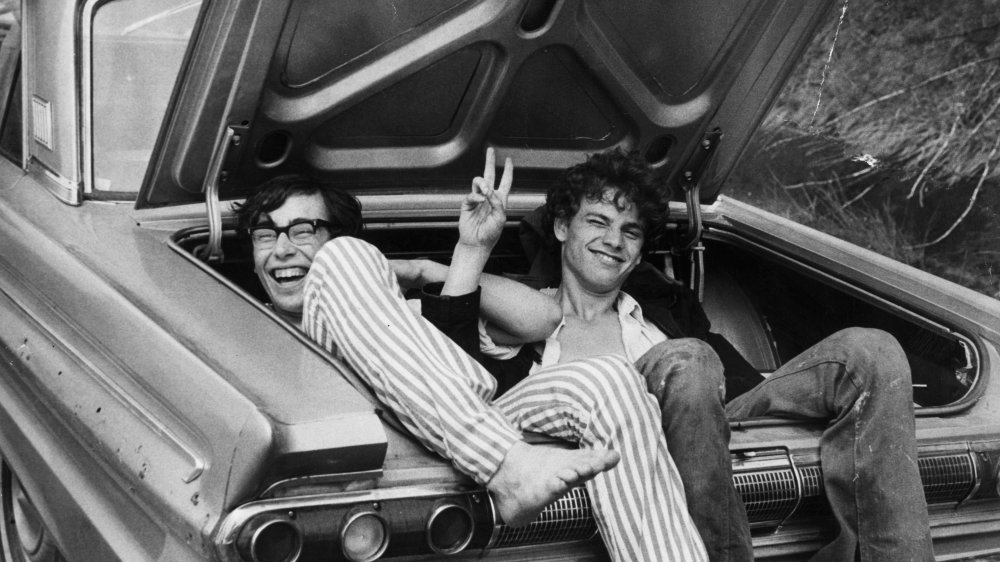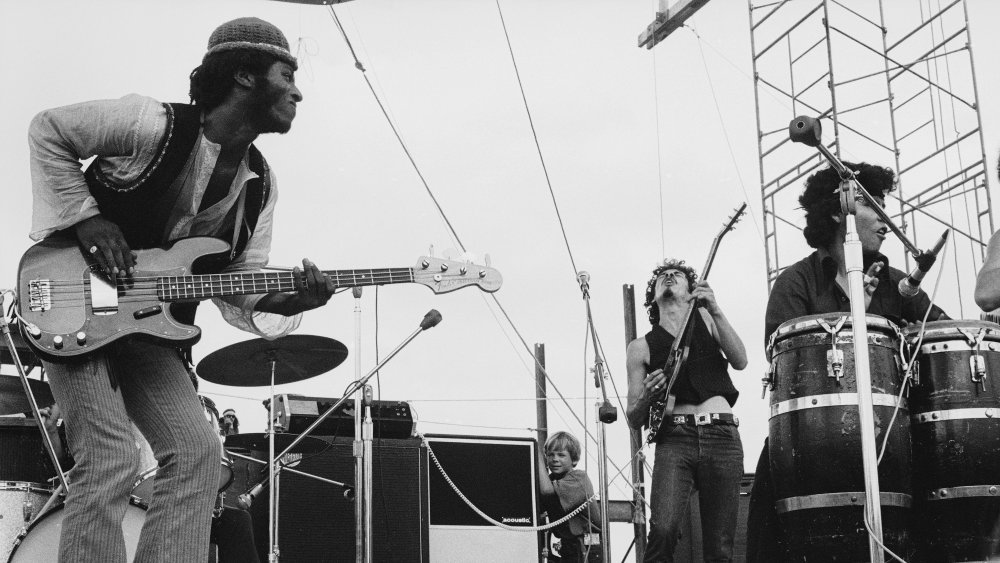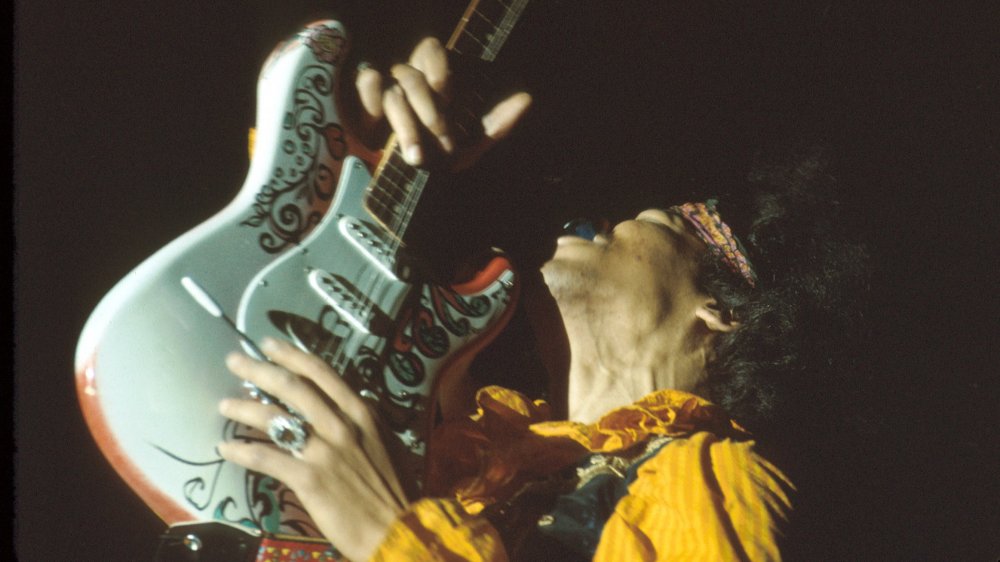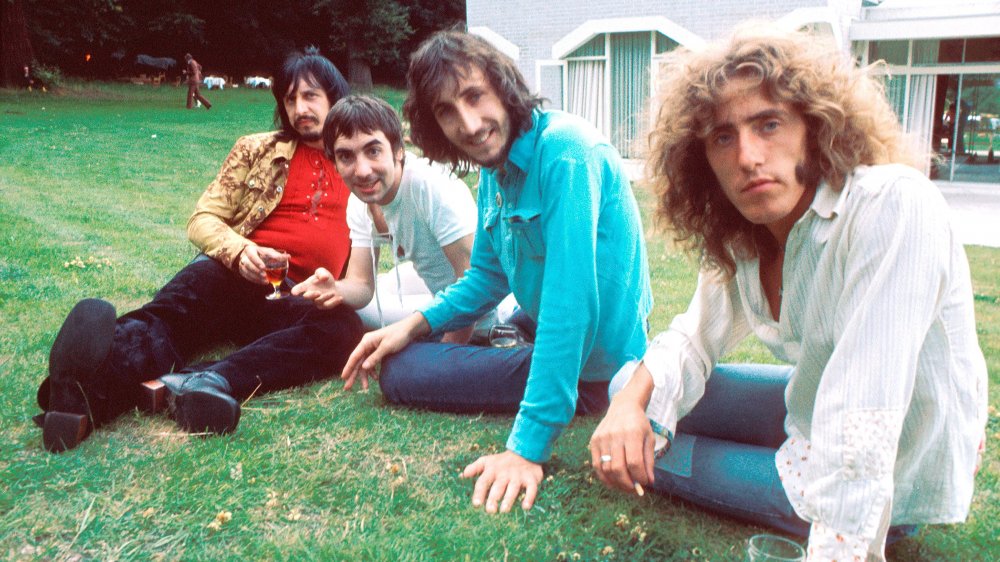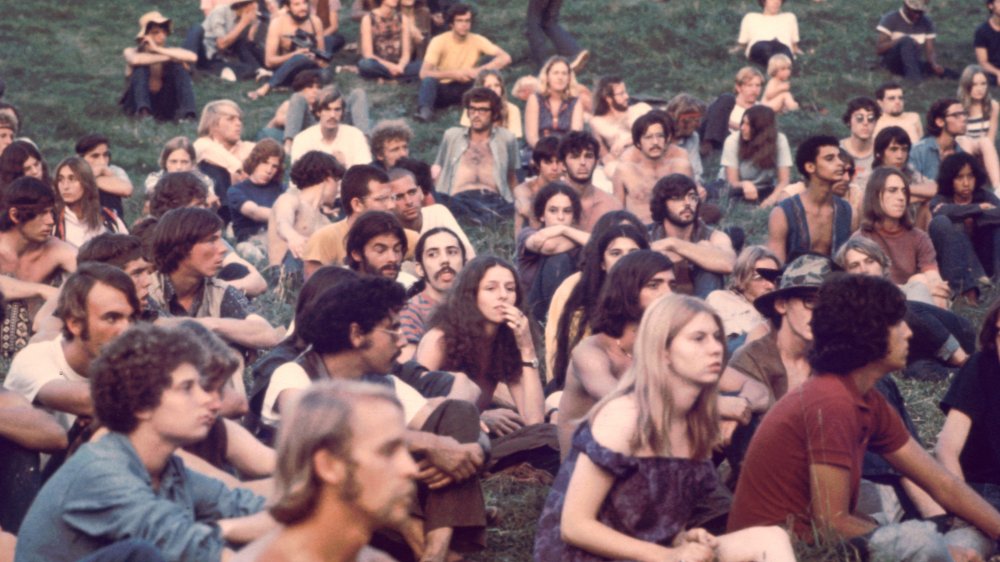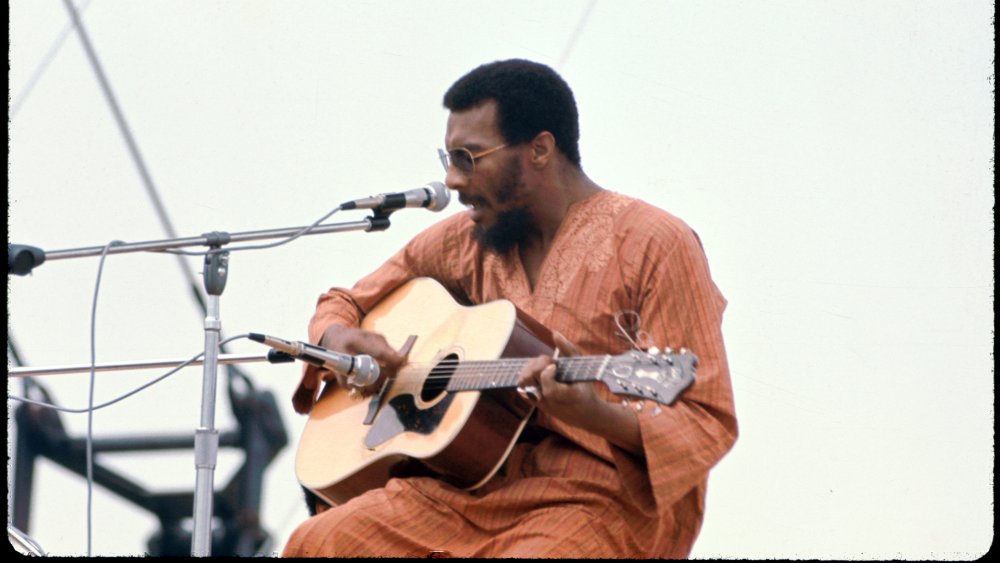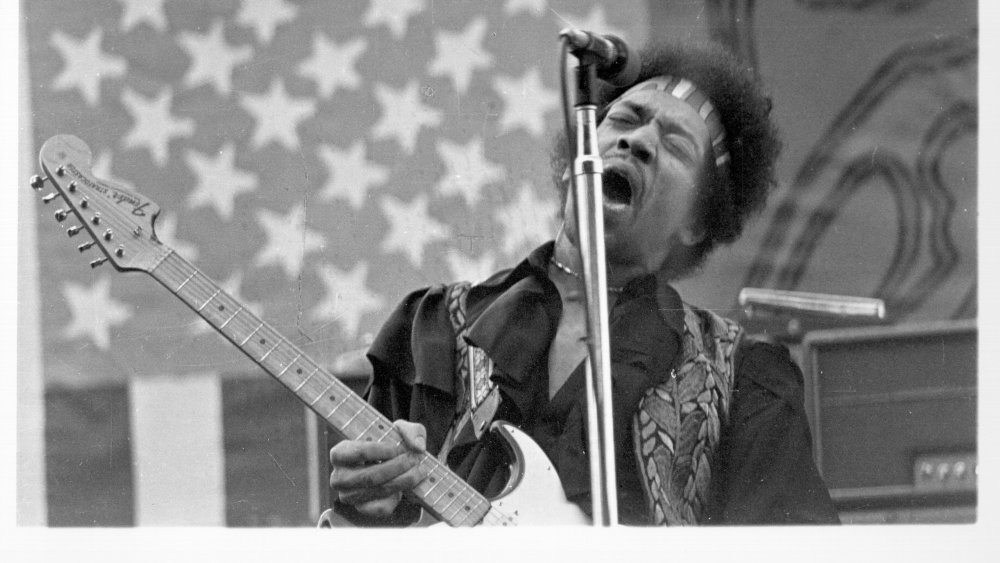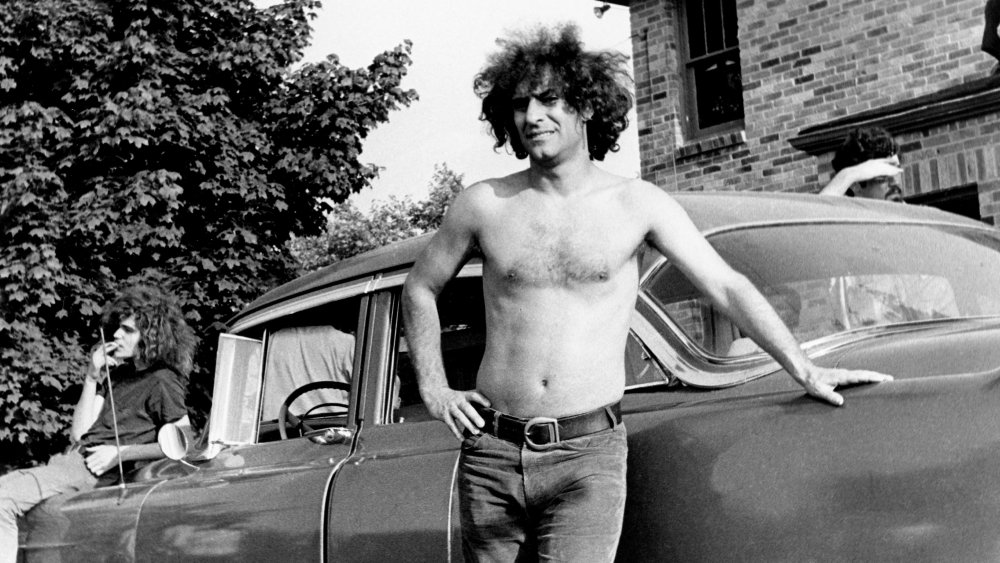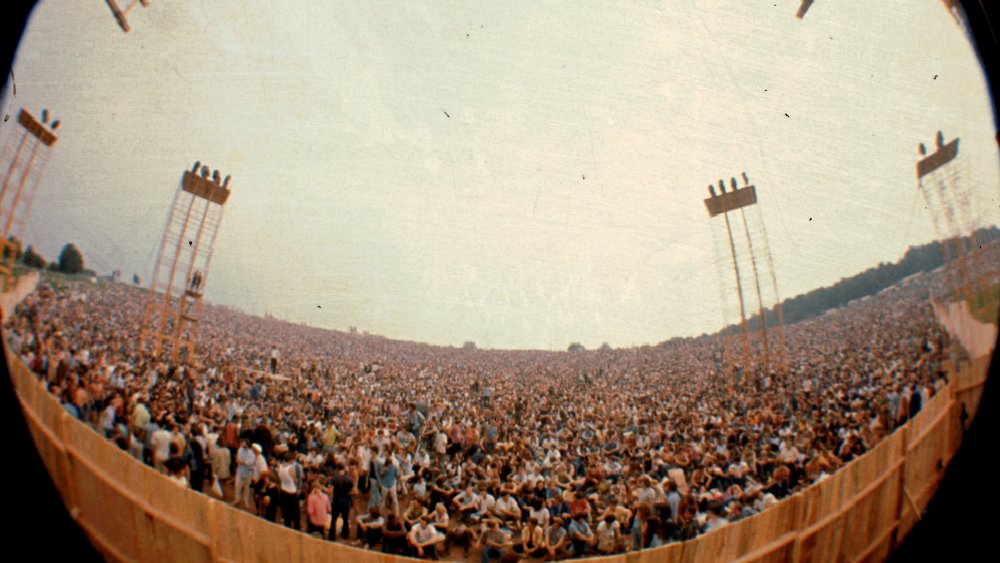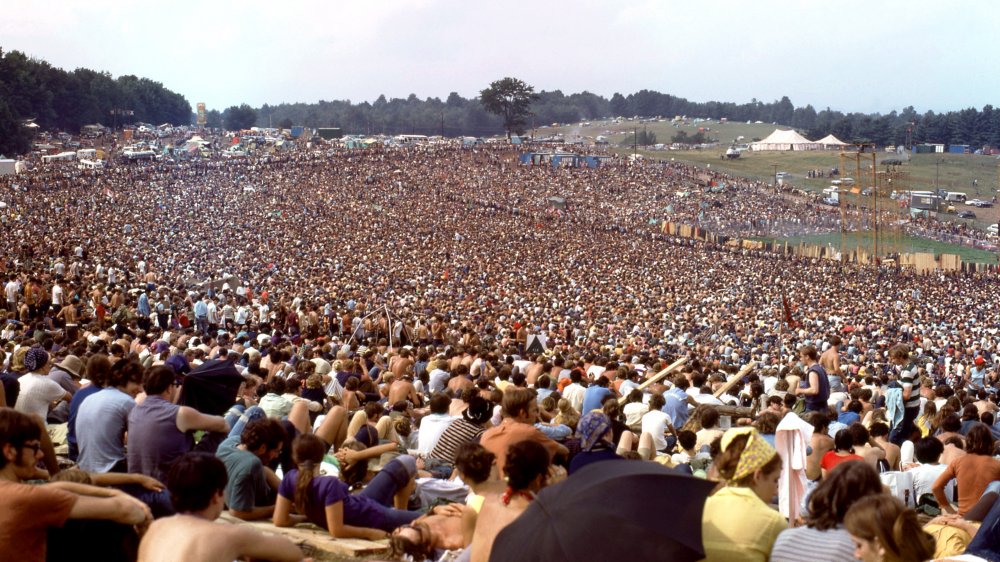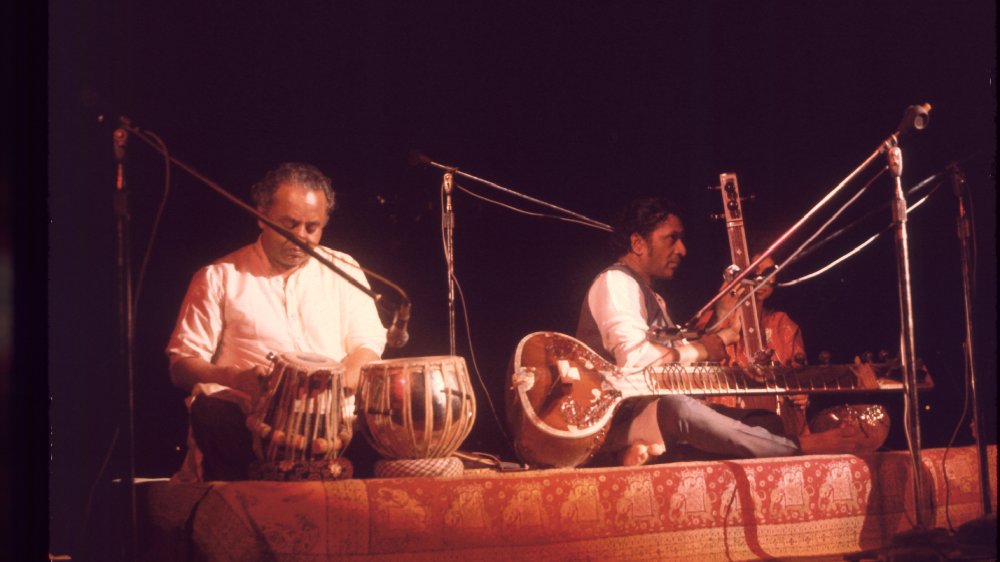False Things You Believe About Woodstock
"By the time we got to Woodstock / we were half a million strong / and everywhere there was a song and celebration."
These lyrics to Joni Mitchell's 1969 song, "Woodstock," described a sort of promised land for a generation of young people. The Woodstock Music and Art Fair took place in August of 1969, only four months until the 1960s came to a close. The decade of the 60s saw a generation of youthful boys and girls desire growth and progress in the world that they lived in.
In the prior year, the young generation witnessed the assassinations of Martin Luther King Jr, the pacifist minister and figurehead of the Civil Rights Movement, and Democratic candidate Bobby Kennedy. Both men were symbols for a better, more peaceful world. Cities exploded in race riots throughout the decade. The ongoing Vietnam War had created the largest anti-war movement in the nation's history, as images of brutality were regularly shown on television.
However, 1969 seemed to be a year of fulfilled promises. A month before Woodstock, the wishes of assassinated President John F. Kennedy came true when three astronauts landed and walked on the surface of the moon. With Woodstock, the generation known as "baby boomers" lived in peaceful bliss while enjoying music and art.
Nostalgia is a lot of things but accuracy is not always one of them. Woodstock was a seminal moment, but it was not heaven on earth. Here are false things believed about Woodstock.
The top acts of the era performed at Woodstock
The Woodstock music festival has been celebrated as this once-in-a-lifetime moment when the era's greatest musicians all gathered for a weekend to play their songs. The 1960s saw a revolution, among other things, in popular music. Despite all of this, the lineup of musicians who did not play Woodstock is actually more impressive than the lineup of musicians who played that weekend at the festival.
According to 11 Points, three of the biggest bands in the world did not show up at the concert for different reasons. Led Zeppelin was on their summer tour and had a show in Asbury Park, N.J. The Rolling Stones might have been able to attend, but lead singer Mick Jagger was filming a biopic about outlaw Ned Kelly. Four months later, the group played at the Altamont Speedway Free Festival. The Beatles had a number of reasons for their absence. The group had given only one live performance — their rooftop show that January — since 1966.
There were rumors that John Lennon had wanted to play with Yoko Ono and the Plastic Ono Band, but promoters denied his request. This might have been because Eric Clapton, a member of the supergroup, was absent while trying to get another group off the ground with Steve Winwood. Other absences included Bob Dylan, The Doors, and The Jeff Beck Group who, according to Ultimate Classic Rock, broke up before their scheduled performance at Woodstock.
Joni Mitchell attended Woodstock
Speaking about absences, by all leaps of logic, it would only make sense for Joni Mitchell to have attended Woodstock. She was a singer-songwriter from the Laurel Canyon region of Los Angeles where Woodstock performers such as Crosby, Stills, Nash, and Young and Canned Heat originated. Her 1969 song, "Woodstock," inspired by the festival, was described by Spinditty as a "dreamy utopia where everything was all about peace, love, and understanding."
However, Mitchell never attended Woodstock. According to Yahoo, the singer had a scheduled appearance on the Dick Cavett Show the Monday after the festival, and she and her manager feared that the long traffic jams on the roads would make it impossible for her to perform at both places. So she missed the festival and wrote the song after hearing a second-hand account of the weekend from her partner.
According to Polyphonic, Graham Nash of Crosby, Stills, Nash, and Young (CSNY) met up with Mitchell after the band's performance still elated from the experience. From his stories, Mitchell began to compose the song, and it became a standout track for her 1970 Ladies of the Canyon album. CSNY also released a version of the song for its Déjà Vu album. Mitchell's website featured a monologue from the singer prior to playing the song at a concert
"It was really something, that people could be so good to each other. Even if it was only for three days," she said.
Woodstock was the first music festival
While Woodstock exists in this unique space and time, the festival was far from the first concert of its kind. There have been many examples of musicians gathering together and performing, such as 1959 shows featuring Buddy Holly, Ritchie Valens, and the Big Bopper. Even if we distinguish Woodstock as a music festival instead of a tour of shows, there are a few notable examples of multi-day festivals with a diverse set of musicians.
According to Set List, nine Newport Folk Festivals had occurred between 1959-1969. Like Woodstock, the festivals featured a variety of different artists from different genres, such as blues musicians Lightnin' Hopkins, Muddy Waters, and Son House, folk artists such as Joan Baez and Bob Dylan, and country artists such as Johnny Cash and Mother Maybelle Carter.
Still, while many people saw Woodstock as the culmination of the era, it was another music festival two years prior that laid the groundwork for Woodstock — the Monterey International Pop Music Festival. The New York Times refers to the festival as "the Rock Festival That Sparked It All." In many ways they were correct. Some of the biggest names at Woodstock, such as Jimi Hendrix, Janis Joplin, and The Who, were unknowns before performing at Monterey in front of 200,000 people, History explains. Similar to Joni Mitchell, the festival was immortalized in song by Eric Burdon and the Animals, who, unlike Mitchell, played at the festival they wrote about.
Woodstock was the largest music festival ever
Woodstock was many things: it was a symbol for the counterculture movement of the 1960s, an important moment in popular music, and a place where some of the greatest musicians performed, according to English online. It was also attended by between 300,000 to 500,000 people. However, the concert barely made it one year before being topped in terms of crowd size.
As reported by the Guardian, the 1970 Isle of Wight Festival in England had a reported 600,000 concertgoers to see musicians such as Jethro Tull, Jimi Hendrix (in one of his final shows before his death), The Who, and Joni Mitchell perform. The first Isle of Wight Festival in 1968 only had 8,000 people. However, in 1969, that number increased to 80,000-100,000, in part because of a rare performance from Bob Dylan, who had stopped touring after a 1966 motorcycle accident.
That being said, Mitchell did not have as many positive things to say about the Isle of Wight. Mitchell said throughout her routine she was interrupted, shouted down, and heckled by concertgoers. Eventually, she started to ask the crowd to "give us some respect," though this did little to help. It would be another 32 years before another Isle of Wight was produced, as promoters believed festivals like this would require better organization and security.
According to Ultimate Classic Rock, Kris Kristofferson was booed off the stage, and Freddie Stone of Sly and the Family Stone was hit by a beer can while performing.
No one died at Woodstock
Woodstock was promoted as "three days of peace and music." While the performers certainly played music during the three scheduled days, unfortunately, the peaceful part was not as true as promoted. In fact, two individuals met their untimely end at the festival.
According to Time, Dr. William Abruzzi was hired to oversee medical issues at the festival, where he realized he was well understaffed. Organizers flew in doctors and nurses from nearby to help the "Rock Doc," as well as from a commune in Sante Fe, N.M. named The Hog Farm, in order to help festival-goers on bad drug trips.
Abruzzi's medical records reported 742 overdoses, 28 requiring medication. Unfortunately, two young men lost their lives. One of the deaths was an 18-year-old marine bound for Vietnam named Richard Bieler, who died from an alleged drug overdose. The second person to die was a 17-year-old New Jersey native named Raymond Mizsak. While sleeping in the field Saturday morning, the young man was run over by a local farmer who was on his tractor. Police reports indicate that the rider had made two rounds of the area to make sure no one was there. He immediately called the police and ambulance when he saw the fatally injured young man. A concertgoer attempted in vain to warn the driver of the sleeping boy.
Woodstock was a three-day event
What is better than a three-day weekend? How about a four-day weekend! Woodstock was fraught with delays, bad weather, traffic jams, and technical issues that pushed the festival from three days of music to three days and a morning of music. The headliner of the festival, Jimi Hendrix, did not enter the stage to begin his set and close the show until 9 a.m. Monday morning, as told by the official Woodstock website.
Richie Havens, the festival's first performer, played for nearly three hours, as traffic jams had delayed other musicians from the stage. He eventually ran out of songs and began an improvised version of the classic blues song, "Motherless Child," before the other performers arrived. Rain delays affected artists such as The Grateful Dead and Joe Cocker, forcing groups like Creedence Clearwater Revival and The Who to perform in the wee hours of the morning. Cocker started to play an 85-minute set at 2 p.m. on Sunday, and because of weather delays, the next performer did not play until 6:30 p.m., according to Woodstock Fandom.
Rain delays led the weekend festival to stretch to a four-day festival, as six different artists played their sets on Monday, August 18. This included Crosby, Stills, Nash and Young, Sha Na Na, and Johnny Winter, to name a few. When Hendrix famously played a distorted version of the Star-Spangled Banner to open the final performance of Woodstock, it was 9 a.m. on Monday.
Jimi Hendrix performed to a packed audience at Woodstock
Speaking of which, the most remembered moment of the Woodstock festival was the performance of its headliner, Jimi Hendrix. The man considered the greatest guitar player ever entered the festival with his new band, Gypsy Sun & Rainbows or Band of Gypsys. According to Open Culture, despite only having two weeks to rehearse in a rented home near the venue, the group left an amazing impression... on a fraction of the crowd from the previous few days.
Rain delays, poor conditions, and three days surrounded by crowds of stoned hippies tend to subsequent smaller crowds. As few as 40,000 people were in attendance to listen to Hendrix on Monday — less than half of the nearly half-a-million weekend concertgoers. On top of that, the concert still had the potential for disaster, as, according to Worcester Polytechnic Institute (WPI), the Hendrix's group had a terrible rehearsal. Joel Brattin, WPI professor and Hendrix scholar, said, "after listening to those tapes, you would not have guessed that the Woodstock performance would be so good."
By the end of the two-hour show, Hendrix had left a lasting impression on his audience and the promoters, who packaged his performance in the 1970 documentary, Woodstock, and a separate film released in 1999, Jimi Hendrix Live at Woodstock. Hendrix also gave a rare encore performance of his first single, "Hey Joe," to the cheering crowd, closing the book on Woodstock.
Woodstock was peaceful and calm
Who could imagine that in a gathering of just under half a million people that there would be a few injuries? Woodstock was able to run smoothly in terms of individual concertgoers getting along with each other. However, this did not mean the bands were able to live by the festival's peace and love code, or that medical attention was not needed for injuries.
As mentioned before, two individuals lost their lives at Woodstock, and other attendees suffered bad drug trips that required medical attention. However, this was not the main cause of concern at the festival. According to the Journal of Emergency Medical Services (JEMS), at least 3,000 individuals were treated by doctors and nurses at the festival, and foot lacerations were the main issue at Woodstock. As the weather worsened, many took off their socks and shoes and traversed the land with their bare feet. "Rock Doc" William Abruzzi listed 938 foot lacerations, 135 foot punctures, and 346 other foot injures. There were also 23 epileptic seizures, 176 treatments of asthma attacks, and 250 patients airlifted out of the festival (via JEMS).
The New Yorker in their piece, "Surviving Woodstock," discussed how emcees would employ the crowd to find missing children and items, climb down from the sound stage, and ask for medical supplies.
Famously, activist and anarchist Abbie Hoffman interrupted The Who's performance to talk about jailed activist John Sinclair, at which point The Who's guitarist Pete Townshend hit Hoffman with his guitar, the NY Times report.
Woodstock turned a profit
How does one not turn a profit when the size of the audience is more than ten times what was expected? Well, according to Louder Sound, it was the sheer size of the concert that was the largest problem and what led to the sponsors going into the financial red.
According to the BBC, the promoters of the festival went under by $1.4 million due to payment to workers and performers, fees to care for the attendees, and the damage that was done and lawsuits following the festival. Originally, the tickets bought in advance were $18 (about $125 by today's standard) and $24 at the gate. The only problem was, there was no gate! Fencing and ticket booths were not properly set up in time for the festival, so there was nothing stopping legions of fans from just walking in free of charge.
The crowd got so big that an estimated 10% of individuals who bought tickets in advance sued for refunds because they could not attend the festival they had paid for. Also, after paying Max Yasgur $75,000 to use his farm, the promoters had to pay another $50,000 for the damage done to his property. By the end of the festival, according to Observer, the promoters spent about $3.1 million ($15 million today). The organizers did not get out of the red until the 1980s, after years of money made from licensing, merchandising, and a profitable documentary film produced by Warner Bros.
Max Yasgur was an average farmer
Max Yasgur was the foundation of the festival, as he agreed to host the three days of music on his farm. While popular folklore likes to portray this as a lowly farmer who decided to let the kids play their music as long as they stay peaceful, just think of this. About half-a-million people were at Woodstock. What lowly farmer has enough land for the entire population of Wyoming?
According to Time, Yasgur owned 600 acres of land, which he rented to the organizers for the festival. Yasgur himself was also not a part of the flower-power crowd. He was a staunch conservative and pro-Vietnam War. However, he saw it as the responsibility of his generation to reach out and mend the generation gap that had been formed over the course of the decade. He gave a speech at the festival and told the New York Times (via Time), "if the generation gap is to be closed, we older people have to do more than we have done."
Yasgur's neighbors sued him for $35,000 in damages that they had sustained in January of 1970, as reported by Best Classic Bands. His neighbors and the community turned on Yasgur and organized boycotts against his products, both before and after the festival. Between battling neighbors and an ongoing heart issue, he sold his farm in 1971 and moved to Florida. Two years later, Yasgur would die of a heart attack at 53 years old.
Woodstock took place in Woodstock, N.Y.
Woodstock was not held in Woodstock, N.Y., though it was the first town selected in the months of planning. The actual festival was held in Bethel, N.Y., 70 miles away!
A proper venue could not be secured in the town of Woodstock, and the festival was moved to nearby Wallkill (via Time). A month before the festival, as reports came in that the crowd would be around 50,000, town officials passed a law prohibiting the event. The organizer approached a Bethel, N.Y., motel owner named Elliot Tiber who offered his farm, though it was too small. Tiber then recommended his friend, Max Yasgur, and the rest as they say was history.
According to Ultimate Classic Rock, Woodstock was the home of folk singer Bob Dylan, who did not perform at Woodstock but did play the 1969 Isle of Wiight Festival in England two weeks later. Dylan said his son was sick, but rumors allege he was tired of dealing with the gathering hippies. On the first day of the festival, Dylan took a ship to England and soon moved out of Woodstock to avoid "druggies."
